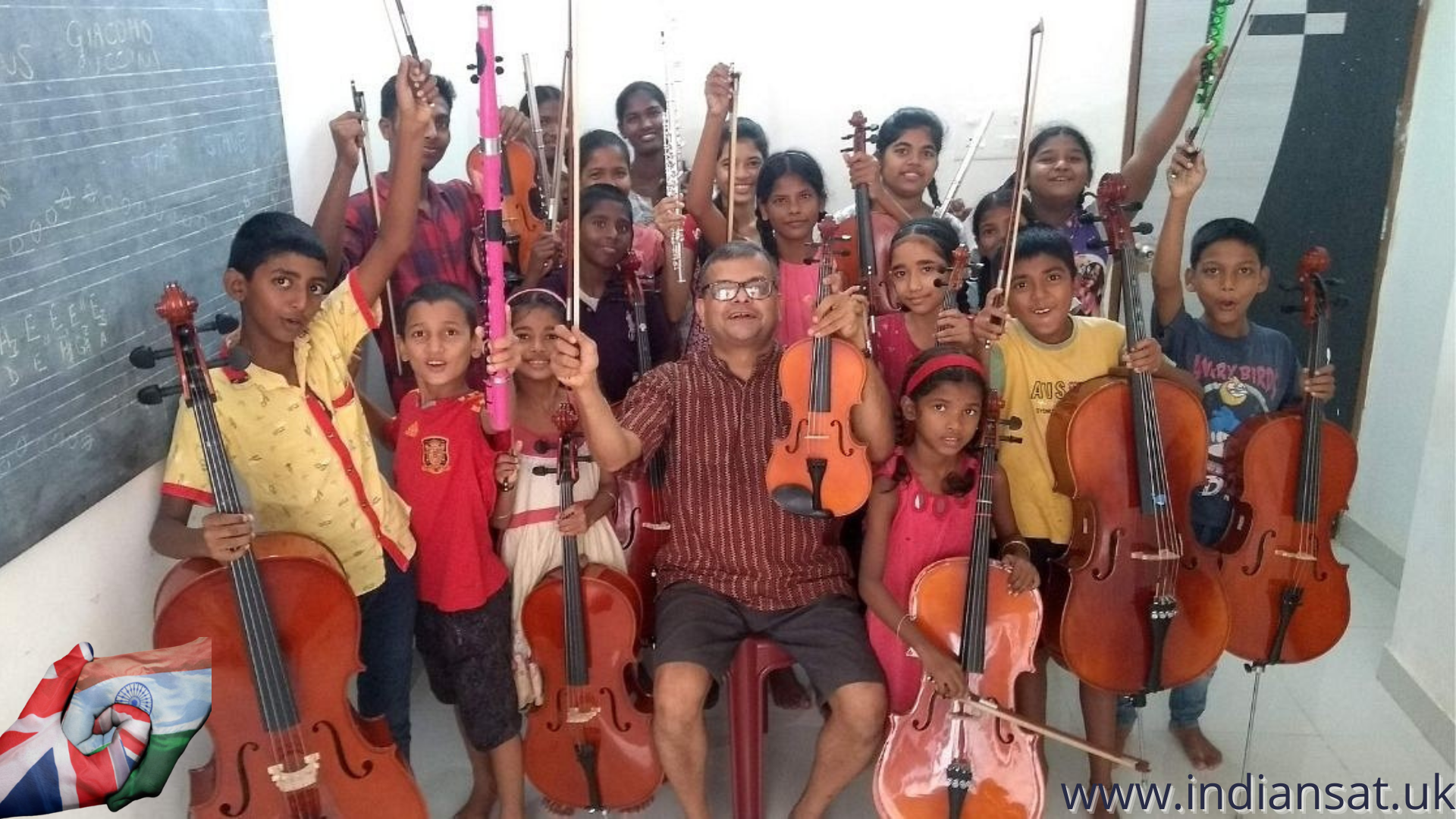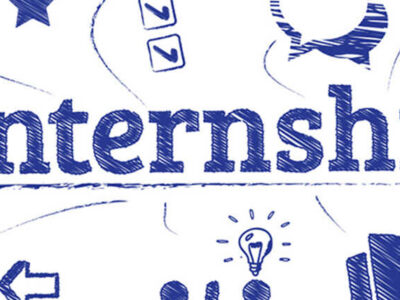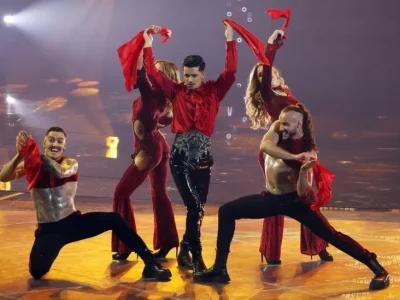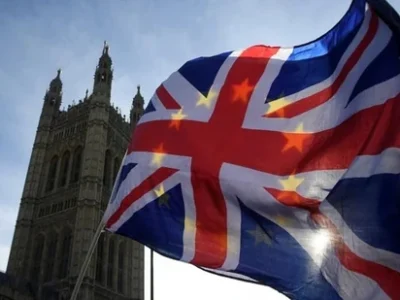Goa-based c quit his obstetrics and gynaecology practice in the UK and returned to India in 2008 to start Child’s Play India Foundation, which aims to uplift and empower children from disadvantaged backgrounds through western music.
Growing up in Goa, Dr Luis Dias (55) always found solace in music. It was a big part of his life, he recalls, right from his visits to church. But without the presence of the internet, he notes, it was hard to pursue a dream in that field. “If you didn’t know who to write to or where to submit your pieces, you had no scope,” he recalls in conversation with The Better India. “I’d loved to have pursued a career in music, but I didn’t know how.”
Coming from a family of doctors, Dr Dias thought it was the natural field of choice for him as well — he is a fourth-generation doctor from his family. His great-grandfather is Dr Migeul Caetano Dias, who was at the forefront of the fight against the Bubonic Plague in Goa. “We were a traditional farming family but my great-grandfather was the first to study medicine.”
Back when Dr Dias was growing up, career choices were limited, he says. “Today you have all sorts of arts you can pursue, but at that time, there was medicine or engineering, and things like that. I was a decent student so I pursued medicine but my love for music never faded.”
He became an obstetrician and gynaecologist and practised in India for 10 years. After this, he spent a decade in the UK. However, he notes, “More than having a lucrative career in medicine in a foreign land, I relocated to be closer to the music I loved. In those 10 years, whenever I was not busy with my work as a doctor, I was pursuing and exploring music.”
A life changing moment
In 2005, Dr Dias married his wife, Chryselle, who shifted from India to move in with him in the UK. Around this time, the Symphony Orchestra of India was formed, which is the country’s first and only professional orchestra. “This was a big deal because until then, India did not have a professional symphony orchestra,” Dr Dias notes. “I was very excited by this development. This orchestra is made up entirely Eastern Europeans and only a few Indians. I wondered why we couldn’t push for more Indians to join this movement.”
Alongside was Dr Dias’ understanding of the grave inequality that existed back in his home country. These, he says, are sections of society that are more or less overlooked. What if you could give them a better life if you hand them an instrument? This idea, he says, came from a project he’d come across years ago, wherein a few children from a slum were given disposable cameras to capture their lives from their own lenses. This project went on to become very famous and left Dr Dias deeply inspired.
The amalgamation of these two desires happened when Dr Dias attended a BBC concert in July 2007 at the Royal Albert Hall in London. This orchestra consisted solely of underprivileged children from various parts of South Africa and South America. “I was blown away by the talent of these young kids. After the concert, I happened to talk to one of the children, who told me that music saved his life. He told me stories about his friend who had taken to drugs and crime and had eventually died. This kid told me that if he had not been given the violin, this could have been him. That really stuck with me. When I came home, I was so overwhelmed by what I had seen.”
He adds, “A month before going to that concert, Chryselle and I had started preparing to settle down in the UK permanently. But after the concert, there was no looking back.” So in 2008, Dr Dias gave up his thriving career in medicine in the UK and returned to his home in Goa to start working towards his dream. And that’s how Child’s Play India Foundation was born.
‘Creating something beautiful together’
The organisation works with children coming from disadvantaged backgrounds across Goa to instill positive values and socially empower them through the medium of western classical music. These kids are taught the violin, viola, cello, recorder, transverse flute, and piano, which they then perform in concerts across the state.
Child’s Play aims to provide these kids a sense of self-esteem, possible career opportunities, a sense of discipline and encourage excellence and creativity. Around 250 children have learned music with the organisation, and have performed in 20 concerts across Goa. Audience members at these concerts include people from all backgrounds and walks of lives, and most notably, proud parents who marvel at their children mastering the toughest of instruments with ease.
“Our idea is to teach these kids instruments that you’d find in symphony orchestras, so we’re not teaching them the guitar or keyboard. We want to build an orchestra or choir,” Dr Dias notes.
Child’s Play has various projects through which they work with these children. For example, there’s the Hamara School project, wherein the organisation has tied up with a shelter for underprivileged children in Goa. Hamara School cares for over 80 children of construction workers, migrants and other low-income families and provides them with food, clothing, after school education and a safe place. A few children from this shelter are learning the violin, cello, flute and choir with the organisation.
The NGO has also launched the Santa Cruz Village Project, where they work with the Santa Cruz church and parish school to conduct after school projects and teach these village children instruments such as the violin and piano. Before the pandemic, Child’s Play would hold at least two concerts every year.
Lessons at Child’s Play are free for the disadvantaged sector or for those who cannot afford it. Some projects are open to children in the wider community who pay Rs 300-500 per month for offset costs. However, any family who is interested but can’t afford the amount is never turned away. Instead, they’re inducted under the Child’s Play scholarship so they can play with the organisation.
“When sir first came to my children’s school to propose the idea of learning western music, I was very hesitant. I know these instruments are costly and that we couldn’t afford them but Dr Dias never turned us away,” says Seema Sali, a Taleigao resident whose children Shreya and Sanjay have been learning the cello and violin with Child’s Play for three and two years, respectively.
“It has been a pleasure watching my children learn music with sir,” she tells The Better India. “Dr Dias provided them with all the instruments and he regularly helps them maintain these. My daughter, in particular, was very shy and couldn’t speak well. Learning music with Child’s Play has helped transform her. She’s picked up English so well, which has been such a big achievement for us. I tell my neighbours and other parents all the time that this organisation has helped change my children for the better, and that they are doing great work. When I watch my children perform up on stage, it fills me with so much pride.”
“I am a housewife and we’re not that well-to-do. I want my children to realise all the dreams that I couldn’t have myself. I have always been worried about giving them a good education and making them good people and Dr Dias stepped up to help. He makes accommodations to suit our comfort and is always willing to help. My children love the lessons he has imparted and my daughter regularly keeps up with practice,” Seema says.
“Playing and singing together is a good lesson for society,” Dr Dias notes. “We want to build a better society where we listen to each other. Music is excellent for that. We want to tell these children that no matter how small your role, your contribution is paramount. We harmonise, in the literal as well as the figurative sense. We make something beautiful together, which we couldn’t do on our own.”
Music belongs to everyone’
Speaking about some challenges that Dr Dias has faced along the way, he says, “The shift from my career in medicine to running this organisation has certainly been tough. The money is not what it used to be. But after 20 years of practising, the only thought I was left with was that there’s only one life to live. It’s also been hard to find people to invest in our dream.”
The biggest challenge, he notes, is getting teachers for the NGO. “We want to maintain a certain quality and look after these children. We might find teachers who are great at what they do but might not be able to connect with these children and want to help them. Alongside music, there’s also the question of character building, instilling confidence and realising the importance of hard work. There are many hindrances in inviting foreign teachers to join us as well. We could invite them on a volunteer basis but the stipend is not much, which makes it hard for them to survive. So sometimes a teacher from outside will fly in for six months or so but there’s a gap once they leave.”
Dr Dias works hard to fill this gap as much as he can. While he grew up playing the violin, over the years, he has honed his skills in cello and other instruments so he can continue teaching. “If you leave too much of a gap in teaching children, they lose interest. So we have to keep going,” he says.
“So many of our children have done well in their higher education, with renewed focus and drive. Now there’s no way to directly prove this, but I’d like to think it’s because they continued playing. They learn life lessons about daily practice, hard work and perseverance — and these are qualities you can apply to all parts of your life,” Dr Dias says.
The onset of the COVID-19 pandemic has certainly posed additional challenges. “Many of these kids don’t have access to phones or online learning. So continuing lessons has become hard. When you’re teaching instruments, it’s always better when you’re physically present with your student. Our lessons took a big hit during the lockdown last year. When things began to open up a little, a few kids would come to my house to learn. But after the second wave, that had to be put on hold as well. We also have to keep tuning and cleaning these instruments but it’s got a lot harder.”
“The dream is to reach out to many more kids, especially those from disadvantaged backgrounds, because they’re the ones who are denied a decent living the most. But for this, all sections of society have to work together. We want to uplift these kids and let the world know that music belongs to everyone. It’s about creating a society that grows together and exists in harmony through this medium,” Dr Dias says.
To donate to, support, or learn more about Child’s Play, you can visit their website.
![]()











